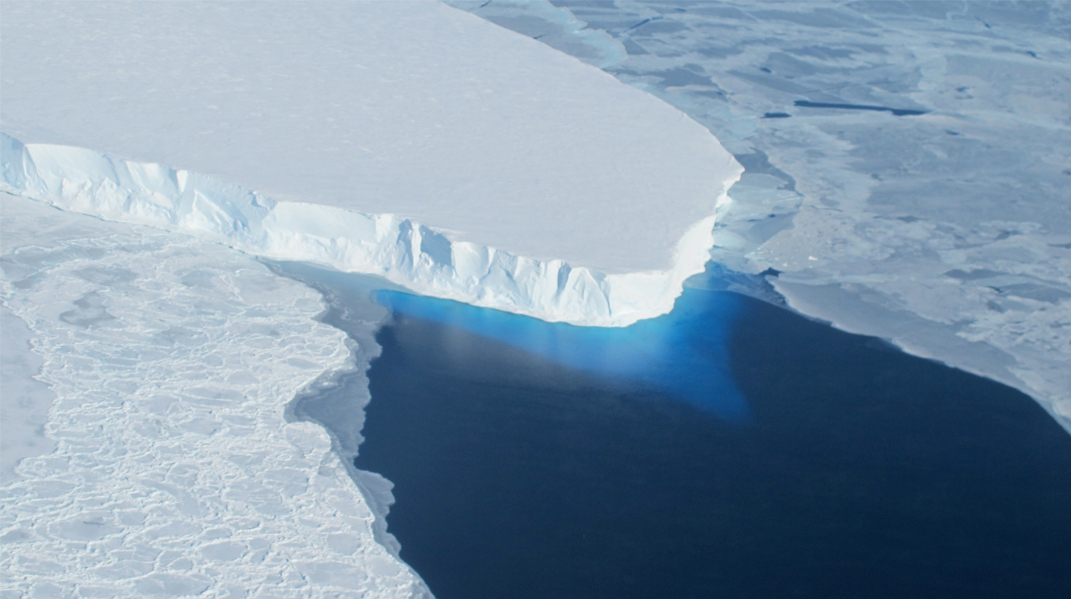
The Melting of the Doomsday Glacier Could Raise Sea Levels by 65cm
The Thwaites Glacier, located in the West Antarctic Ice Sheet, is one of the most vulnerable glaciers to climate change. According to modelling, if it were to thaw completely it could raise global sea levels by an average of more than half a metre.
What is the Thwaites Glacier and why is it important?
It’s a massive ice sheet that covers an area of about 192,000 square kilometres, that’s about the size of Great Britain. It flows into the Amundsen Sea, where it forms a floating ice shelf that helps to stabilise the glacier and slow down its movement.
The Thwaites Glacier is important for two reasons. First, it acts as a plug that prevents the rest of the West Antarctic Ice Sheet from sliding into the ocean. If the glacier were to collapse, it could trigger a domino effect that would destabilise neighbouring glaciers and cause an additional three-metre rise in sea levels. Second, it contains enough ice to raise global sea levels by 65 cm on its own, which would have devastating impacts on coastal communities and ecosystems around the world.
What is causing the Thwaites Glacier to melt?
The main cause of the Thwaites Glacier’s melting is the warming of the ocean waters that surround it. Due to climate change, the winds in Antarctica have shifted and brought more warm water onto the continental shelf, where it reaches the base of the glacier and increases its melting rate. As the glacier melts, it loses mass and becomes thinner and weaker, making it more prone to cracking and breaking off into icebergs.
Another factor that contributes to the glacier’s melting is the feedback loop between ice and water. As the glacier melts, it exposes more ice to the ocean, which then melts more. This also reduces the friction between the glacier and the bedrock, allowing it to slide faster towards the sea. Moreover, as the glacier melts, it lifts off from the bedrock and creates cavities that fill with warm water, further accelerating its melting.
What are the implications of the Thwaites Glacier’s collapse?
The collapse of the Thwaites Glacier would have serious implications for both humans and nature. According to a recent study published in Nature Communications , if global warming is not limited to 1.8°C, then melting from the Antarctic and Greenland ice sheets alone could cause sea levels to rise by 1.4 metres by 2100.
This would threaten millions of people who live in low-lying coastal areas, such as Bangladesh, Tuvalu, and parts of Australia. It would also increase the risk of flooding, erosion, saltwater intrusion, storm surges, and coastal habitat loss. Furthermore, it would affect marine life and biodiversity, as well as ocean circulation and climate patterns.
What can we do to save the Thwaites Glacier?
The only way to save the Thwaites Glacier and prevent its collapse is to reduce greenhouse gas emissions and limit global warming. This requires collective action from governments, businesses, and individuals to adopt clean energy sources, improve energy efficiency, and promote sustainable consumption and production.
We also need to support scientific research and monitoring of the Antarctic region, as well as raise awareness and education about its importance and vulnerability. By doing so, we can better understand the dynamics and impacts of ice melting and sea level rise and develop effective adaptation and mitigation strategies.
Join us in our fight against climate change!
If you want to learn more about climate change and how we can help you become part of the solution, please contact us today. We offer a range of services that can help you reduce your carbon footprint and contribute to a greener future. Whether you need a carbon audit, a carbon footprint calculator, or carbon neutral certification, we have you covered. You can also join our Low Carbon Economy network and access exclusive benefits and opportunities. Together, we can make a difference for our planet and our future generations.


